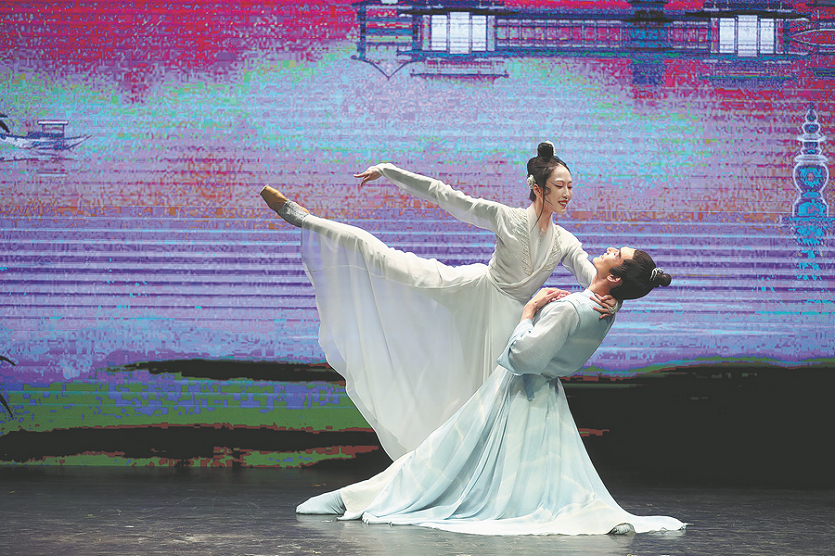

On Aug 5 and 6, the company's original ballet production, The Legend of the White Snake, will be premiered in Beijing's Tianqiao Performing Arts Center.
"The development of the original ballet has always been a key mission for ballet companies in China," says Zou, who started receiving ballet training at the age of 11 in Beijing." The story of The Legend of the White Snake is very romantic and poetic, full of traditional Chinese aesthetics, which inspired me to think about turning it into a ballet production.
"I was also very careful about adapting it into a ballet work. For the Chinese audience, the story is well-known, which presents a challenge to us. Fortunately, we gathered a group of great artists to work with us on this new production."
Wang Ge, an award-winning choreographer, who rose to fame with his choreographic works, including The Railway to Tibet and Eternity in Flames, combined traditional folk and contemporary dance elements with ballet movements in The Legend of the White Snake.
Wang says that the ballet stays loyal to the original story and keeping classic scenes, such as Bai and Xu meeting on a boat on West Lake, Hangzhou's iconic scenic area in Zhejiang province, Xu giving his oil-paper umbrella to Bai when a heavy rain falls suddenly, and Bai turning into a white snake after drinking realgar wine.
He gave the character, Fahai, a twist. Fahai, a Buddhist monk in Jinshan Temple, who maintained that the coexistence of human and evil spirits was unallowable, opposes the marriage between Bai and Xu. In the original story, the monk suppresses Bai under Leifeng Pagoda at the bank of the West Lake. In the ballet, Wang added a sense of humor to the character.
"We tried to blur the hatred in the ballet caused by Fahai. Romance and love are highlighted," says Wang. "He (Fahai) sees the love between Bai and Xu. He has his own inner struggles since he has his faith to keep. But love conquers all."